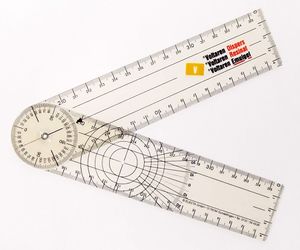Goniometry: Knee Flexion
Introduction[edit | edit source]
The knee joint's range of motion (ROM) is an important clinical parameter used in knee assessment. Knee flexion can be measured with a goniometer. The goniometer can simply measure the joint angles. It has some limitations not allowing the clinician to analyse the ROM and track the knee joint during eg walking or maximum squat. Motion capture devices are mainly used to analyse the patient's gait and assess the condition of the joints and bones.
Anatomical Movement[edit | edit source]
Knee flexion
Axis and Plane for Motion[edit | edit source]
frontal axis and sagittal plane
Testing position[edit | edit source]
subject in supine, with the knee in extension. hip in 0° of extension, abduction, and adduction. a towel roll should be kept under the ankle to allow the knee to extend as much as possible.
stabilization
stabilize femur to prevent rotation, abduction and adduction
Goniometer Placement[edit | edit source]
| AXIS LOCATION | STATIONARY ARM | MOVEMENT ARM |
|---|---|---|
| lateral epicondyle of the femur | along the femur to the greater trochanter | along the fibula to lateral malleolus |
Expected Findings[edit | edit source]
Expected range of motion in prone is 135 degrees[1]
References[edit | edit source]
- ↑ Norkin CC, White DJ. Measurement of joint motion: a guide to goniometry. FA Davis; 2016 Nov 18.







